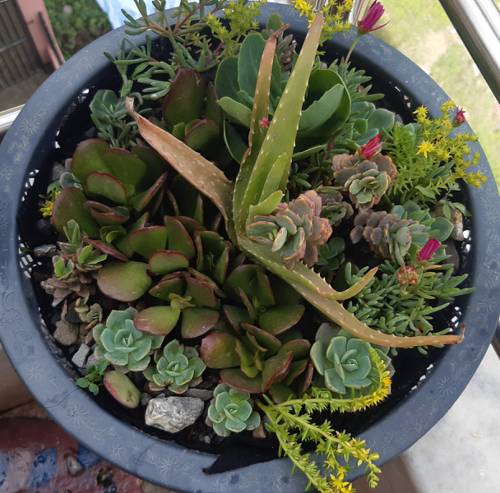
FAQ About Indoor Plant Thermoregulation

What is indoor plant thermoregulation?
Indoor plant thermoregulation refers to the ability of houseplants to manage and maintain an optimal temperature within their cells and tissues, which is crucial for their metabolic activities such as respiration and photosynthesis. Plants can adjust to thermal variations in their environment through various physiological processes.

How do indoor plants regulate their temperature?
Indoor plants regulate their temperature through mechanisms such as transpiration, pigmentation adjustments, and altering leaf orientation. Transpiration helps cool the plant as water evaporates from the leaf surface, while pigments can absorb or reflect light to manage heat levels.

Why is thermoregulation important for indoor plants?
Thermoregulation is vital for indoor plants because it enables them to sustain essential life processes, such as photosynthesis and enzyme activity, at an efficient rate. Proper temperature regulation ensures plants can thrive, grow, and develop without stress from temperature extremes.

How does indoor climate affect plant thermoregulation?
Indoor climate affects plant thermoregulation by influencing the temperature, humidity, and light levels that plants experience daily. Factors like room temperature, the amount of natural light, and humidity control can impact how effectively a plant can regulate its internal temperature.

Can indoor plants adapt to temperature changes inside a home?
Yes, many indoor plants can adapt to temperature changes within a home, although the degree of adaptability may vary among species. Some plants have evolved to handle temperature fluctuations better than others by adjusting their metabolic processes or physical characteristics like leaf size and thickness.

What temperatures are ideal for indoor plant growth?
The ideal temperature range for most indoor plants typically falls between 65°F and 75°F (18°C to 24°C). However, this can vary based on the specific species, with some tropical plants preferring slightly warmer conditions.

Do all indoor plants have the same temperature needs?
No, different indoor plants have varying temperature needs depending on their native habitat. For instance, tropical plants generally prefer warmer and more humid environments, whereas succulents and cacti thrive in hotter, drier conditions.

How does humidity affect indoor plant temperature regulation?
Humidity impacts temperature regulation in indoor plants by influencing transpiration rates. Higher humidity can reduce the rate of transpiration, potentially leading to higher internal temperatures if cooling is primarily dependent on this process. Conversely, low humidity can increase transpiration and cooling.

What are common signs that an indoor plant is experiencing temperature stress?
Signs of temperature stress in indoor plants include wilting, leaf browning or scorching, yellowing leaves, slowed growth, and in severe cases, dropping leaves. These symptoms can occur when a plant cannot regulate its temperature effectively due to environmental conditions.

Can using artificial light affect a plant's thermoregulation?
Yes, artificial light can affect a plant's thermoregulation by altering the heat and light conditions in an indoor environment. LEDs and grow lights can provide additional warmth that can help in cooler climates, but excessive heat from lights can also pose a risk of overheating if not managed properly.

How can I help my indoor plants regulate temperature during winter?
To help indoor plants regulate temperature during winter, ensure they are placed away from cold drafts and windows. Maintain stable room temperatures and consider using a humidifier if indoor air becomes too dry. Supplemental lighting can also compensate for reduced natural sunlight.

Do container choices affect indoor plant thermoregulation?
Yes, container choices can impact thermoregulation. Pots made of materials like clay or terracotta can facilitate temperature regulation by allowing moisture exchange, whereas plastic pots may retain more heat and can lead to overheating in sunny spots.

Is there a difference in thermoregulation between tropical and temperate plants?
Yes, tropical plants have adaptations that make them more tolerant to humidity and higher temperatures, while temperate plants are often adapted to cooler conditions. These adaptations influence how each type manages heat and temperature extremes in indoor settings.

Can too much heat damage indoor plants?
Yes, excessive heat can damage indoor plants by causing dehydration, leaf burn, and inhibited growth. It’s important to monitor heat levels, particularly during the summer or if using intense artificial lighting, to ensure they remain within the optimal range for the plant.

What technologies are available to monitor plant temperature?
Various technologies can help monitor plant temperature, such as digital thermometers, hygrometers for assessing humidity, and even smart gardening devices that track environmental conditions and provide feedback via smartphone apps. These tools can help manage indoor plant environments more precisely.

Can indoor plants naturally cool the air in a room?
Yes, indoor plants can naturally cool the air in a room through the process of transpiration. As water evaporates from the plant leaves, it can cool the surrounding air, making plants a beneficial addition to indoor environments for natural climate regulation.

What role does soil moisture play in thermoregulation?
Soil moisture plays a crucial role in thermoregulation by affecting the plant's ability to transpire and cool itself. Adequate moisture ensures transpiration can occur efficiently, while overly dry soil may limit this process and lead to higher internal temperatures.

Do certain plant species have better thermoregulation?
Yes, certain plant species are better equipped for thermoregulation due to their natural adaptations. Plants native to environments with extreme temperature variations often have mechanisms such as thicker leaves, waxy coatings, or more efficient water-use strategies to cope with temperature stress.

How often should I check the temperature for indoor plants?
It is advisable to check the temperature in your indoor plant environment as often as needed based on seasonal changes. During extreme weather conditions or when using supplemental heat, more frequent monitoring can help ensure plants remain within optimal temperature ranges.

Are there any myths about plant thermoregulation that need debunking?
A common myth is that plants do not need attention during colder months because they enter dormancy. While some plants reduce their metabolic activity, they still require proper temperature management to prevent damage. Another misconception is that all plants can thrive with the same indoor care, which is not true due to varied species-specific needs.
